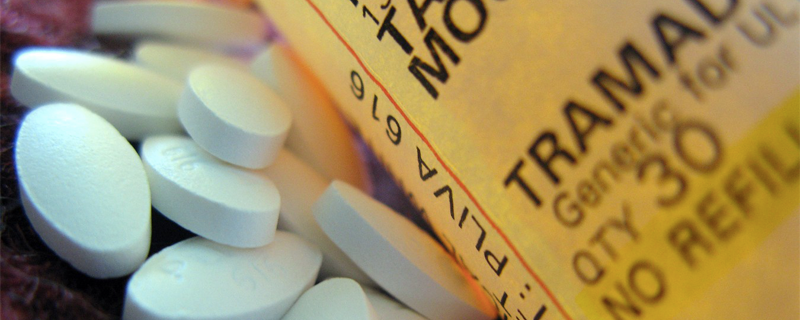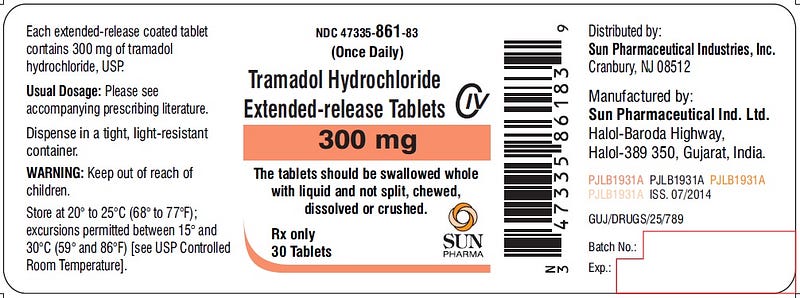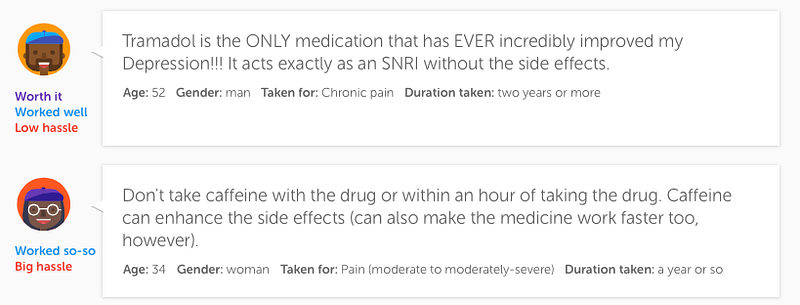
Imagine a prescription medication that relieves pain just as well as narcotics like Oxycontin, but isn’t addictive. Too good to be true?
Turns out, yes.
For years, that was the case with Tramadol,
a synthetic opioid drug that was released in 1995 under the brand name
Ultram to great expectations. This new drug seemed to offer all the
benefits of more powerful, more addictive drugs, but with fewer of the
downsides of dependency — at least in clinical trials. This was
apparently in part because trials examined tramadol use by injection, but it is manufactured — and far more potent — in pill form.
And if the drug was unlikely to make people dependent, it was not likely to be abused, unlike other opioid alternatives like Vicodin (also known as Norco), Percocet — let alone be as dangerous as high potency opioid medications like morphine, Dilaudid, or Fentanyl.
So for many years, Tramadol was widely prescribed by doctors as a “safer” alternative
to narcotics for pain. The difference between narcotics and opioids is
subtle, but opioids are natural or synthetically made drugs that
function metabolically in the body like opium derivatives derived from
poppy plant, while narcotics is more often used as a legal term,
classifying drugs that blur the senses and produce euphoria, including
cocaine and other non-opiates.
Indeed,
unlike other opioid drugs, the Drug Enforcement Agency didn’t classify
Tramadol as a controlled substance, because the FDA believed it had a
low potential for abuse.

Though there were concerns about tramadol abuse in the years after release, the FDA repeatedly determined that the drug was not being widely abused, and so left it as an unscheduled drug.
This
made Tramadol a particularly dangerous drug — because it was, in fact,
highly addictive and prone to abuse. But because it was easier to obtain
and had less concerns from physicians, it was more widely prescribed.
Over the years, as often happens, a difference between clinical trials
and the real world started to emerge. Emergency rooms began to report a growing number of overdoses
related to Tramadol, even as the number of prescriptions soared,
especially after the drug went off patent and cheaper generic versions
became available in 2009. In 2013, nearly 45 million prescriptions for tramadol were written for patients in the U.S., nearly doubling in just five years.
In
fact, one of the reason people like taking Tramadol is because for some
people it works as an antidepressant, producing euphoria or energy,
unlike other opioids which tend to make people
drowsy. This has led it
being used recreationally, while people still go to work or live their
daily lives.
The problem didn’t just emerge in the U.S. Tramadol has become a widely available and widely abused drug across the world, as a recent report
in the Wall Street Journal spelled out, pointing out horrible abuse in
African nations of Cameroon and Nigeria. Ireland has seen overdoses from Tramadol soar. Egypt has been another victim of the misleading perceptions of the drug, as cheap pills have spread as daily-helpers among the poor and working class.
Finally, in 2014, the DEA finally changed Tramadol to a Schedule IV designation
as a controlled substance. But the World Health Organization continues
to classify the drug without restriction, under the belief that it would
become much more difficult to obtain by people who need legitimate pain
relief, according to the Wall Street Journal report.
When
you actually consider the real world experience of people taking the
drug, however, it quickly becomes evident that Tramadol, like other
opioids prescribed for pain relief, also carries the trade off of
dependency and withdrawal. Among the 50 or so first-person reports on
Iodine.com, many Tramadol users cite these effects.
“I
wish I knew this was an addictive narcotic. My doc told me it was non
narcotic,” offered one user, who identified herself as a 36 year old
woman.

This is exactly what makes Tramadol so dangerous. Despite it’s reputation as being a “safe” opioid, it is still an opioid. These drugs have been massively over-prescribed over the past 20 years, causing an opioid crisis in the U.S. with thousands of people suffering the consequences of addiction, ruined lives, and death. In 2014 alone, more than 28,000 people died from opioid overdose — at least half of them prescription drugs, compared to street drugs like heroin (which are often the cheaper drug of choice among people who started with a prescription opioid).

On every page for an opioid drug at Iodine.com, we have placed a clear and emphatic warning about the risks of these drugs in a big orange box. For many people, these drugs serve a purpose, and are a necessary part of coping with pain. But people need to be careful before they begin using them, and they need to be aware that the drugs carry a significant risk of dependency that can squander lives. These are dangerous drugs that must be taken seriously.
@uptimistpeters

No comments:
Post a Comment